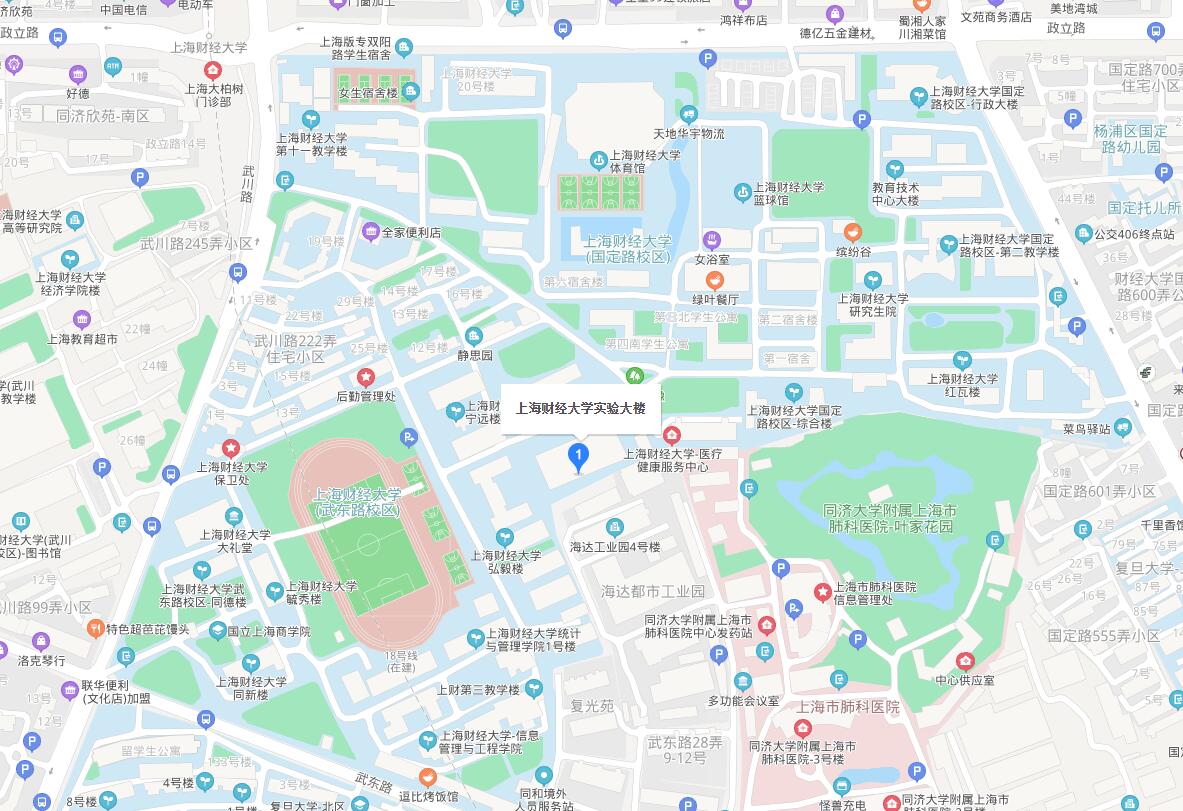本文以2008—2020年中国民营上市公司为样本,考察董事长早期生活阶段嵌入宗族文化环境形成的宗族烙印如何影响企业的慈善捐赠表现。研究发现:董事长宗族烙印显著降低了企业的慈善捐赠水平,且该结果在利用工具变量法、倾向得分匹配法等多种稳健性检验后仍然成立。异质性分析发现,董事长宗族烙印对慈善捐赠的负向效应在组织下滑状态和国有股权未参股的企业中更显著,而企业所属行业是否直接面向消费者对上述关系的影响不存在显著差异。进一步分析显示,董事长宗族烙印的持续性将受到本地文化与外来文化的动态调整,即公司所在地的红色文化以及董事长的高慈善国家经历都将显著弱化宗族烙印对慈善捐赠的负向影响效应。作用机制分析表明,董事长宗族烙印主要通过增强管理层的短视倾向,并增加管理层的关系型交易程度,进而降低企业的慈善捐赠水平。本文从个体烙印的角度拓展了宗族文化的研究范式,也为有效识别企业慈善捐赠的前因,推动民营企业高质量发展提供了实践参考。
董事长早期宗族嵌入与企业慈善捐赠——基于烙印理论的视角
摘要
参考文献
3 方红星, 张勇. 供应商/客户关系型交易、盈余管理与审计师决策[J]. 会计研究, 2016, (1): 79-86,96. DOI:10.3969/j.issn.1003-2886.2016.01.011
11 蒋志强, 崔岩, 王莉, 等. 赓续红色血脉: 红色文化烙印与个人慈善捐赠[J]. 系统工程理论与实践, 2023, 43(11): 3129-3145. DOI:10.12011/SETP2023-0408
13 李雪, 罗进辉, 黄泽悦. “原罪”嫌疑、制度环境与民营企业慈善捐赠[J]. 会计研究, 2020, (1): 135-144. DOI:10.3969/j.issn.1003-2886.2020.01.014
16 柳光强, 孔高文. 高管海外经历是否提升了薪酬差距[J]. 管理世界, 2018, 34(8): 130-142. DOI:10.3969/j.issn.1002-5502.2018.08.010
20 潘越, 翁若宇, 纪翔阁, 等. 宗族文化与家族企业治理的血缘情结[J]. 管理世界, 2019, b,35(7): 116-135,203-204. DOI:10.3969/j.issn.1002-5502.2019.07.011
21 祁玲玲, 赖静萍. 信任的差序格局与民主价值[J]. 江苏社会科学, 2014, (2): 112-120. DOI:10.3969/j.issn.1003-8671.2014.02.015
23 田莉, 张劼浩. CEO创业经验与企业资源配置——基于烙印理论的实证研究[J]. 南开管理评论, 2024, 27(1): 190-201. DOI:10.3969/j.issn.1008-3448.2024.01.019
24 王陈豪, 王轶, 李红波. 宗族文化与企业并购收益[J]. 会计研究, 2020, (2): 101-116. DOI:10.3969/j.issn.1003-2886.2020.02.008
25 王琛智, 张朝, 张静, 等. 湖南省地形因素对水稻生产的影响[J]. 地理学报, 2018, 73(9): 1792-1808. DOI:10.11821/dlxb201809014
27 王孝钰, 高琪, 邹汝康, 等. 商帮文化对企业融资行为的影响研究[J]. 会计研究, 2022, (4): 168-178. DOI:10.3969/j.issn.1003-2886.2022.04.011
29 吴超鹏, 薛南枝, 张琦, 等. 家族主义文化、“去家族化”治理改革与公司绩效[J]. 经济研究, 2019, 54(2): 182-198.
33 徐细雄, 龙志能, 李万利. 儒家文化与企业慈善捐赠[J]. 外国经济与管理, 2020, 42(2): 124-136.
38 朱丽娜, 高皓. 家族控制、社会情感财富与企业慈善捐赠的关系研究[J]. 管理学报, 2020, 17(11): 1679-1687. DOI:10.3969/j.issn.1672-884x.2020.11.011
39 Bekkers R. Traditional and health-related philanthropy: The role of resources and personality[J]. Social Psychology Quarterly, 2006, 69(4): 349-366. DOI:10.1177/019027250606900404
40 Brown W O, Helland E, Smith J K. Corporate philanthropic practices[J]. Journal of Corporate Finance, 2006, 12(5): 855-877. DOI:10.1016/j.jcorpfin.2006.02.001
41 Chen C C, Meindl J R. The construction of leadership images in the popular press: The case of Donald burr and people express[J]. Administrative Science Quarterly, 1991, 36(4): 521-551. DOI:10.2307/2393273
42 Dickson M W, Castaño N, Magomaeva A, et al. Conceptualizing leadership across cultures[J]. Journal of World Business, 2012, 47(4): 483-492. DOI:10.1016/j.jwb.2012.01.002
43 Du X Q, Jian W, Du Y J, et al. Religion, the nature of ultimate owner, and corporate philanthropic giving: Evidence from China[J]. Journal of Business Ethics, 2014, 123(2): 235-256. DOI:10.1007/s10551-013-1804-1
44 Elenkov D S, Judge W, Wright P. Strategic leadership and executive innovation influence: An international multi-cluster comparative study[J]. Strategic Management Journal, 2005, 26(7): 665-682. DOI:10.1002/smj.469
45 Galaskiewicz J. An urban grants economy revisited: Corporate charitable contributions in the twin cities, 1979-81, 1987-89[J]. Administrative Science Quarterly, 1997, 42(3): 445-471. DOI:10.2307/2393734
46 Greif A, Tabellini G. Cultural and institutional bifurcation: China and Europe compared[J]. American Economic Review, 2010, 100(2): 135-140. DOI:10.1257/aer.100.2.135
47 Greif A, Tabellini G. The clan and the corporation: Sustaining cooperation in China and Europe[J]. Journal of Comparative Economics, 2017, 45(1): 1-35. DOI:10.1016/j.jce.2016.12.003
48 Gupta A, Briscoe F, Hambrick D C. Red, blue, and purple firms: Organizational political ideology and corporate social responsibility[J]. Strategic Management Journal, 2017, 38(5): 1018-1040. DOI:10.1002/smj.2550
49 Han Y, Chi W, Zhou J Y. Prosocial imprint: CEO childhood famine experience and corporate philanthropic donation[J]. Journal of Business Research, 2022, 139: 1604-1618. DOI:10.1016/j.jbusres.2021.10.079
50 Higgins M C. Career imprints: Creating leaders across an industry[M]. San Francisco: John Wiley & Sons, 2005.
51 Kish-Gephart J J, Campbell J T. You don’t forget your roots: The influence of CEO social class background on strategic risk taking[J]. Academy of Management Journal, 2015, 58(6): 1614-1636. DOI:10.5465/amj.2013.1204
52 Li H Y, Liu H, Zhao H Q. Traditional culture echoes? The impact of clan culture upon partner surname sharing: Evidence from Chinese supply chains[J]. Industrial Marketing Management, 2021, 99: 40-53. DOI:10.1016/j.indmarman.2021.09.008
53 Liu X D. Corruption culture and corporate misconduct[J]. Journal of Financial Economics, 2016, 122(2): 307-327. DOI:10.1016/j.jfineco.2016.06.005
54 Luo J, Chen J, Chen D J. Coming back and giving back: Transposition, institutional actors, and the paradox of peripheral influence[J]. Administrative Science Quarterly, 2021, 66(1): 133-176. DOI:10.1177/0001839220929736
55 Luo J H, Xiang Y G, Zhu R C. Military top executives and corporate philanthropy: Evidence from China[J]. Asia Pacific Journal of Management, 2017, 34(3): 725-755. DOI:10.1007/s10490-016-9499-3
56 Maher M A. Diagnosing and changing organizational culture: Based on the competing values framework[J]. Journal of Organizational Change Management, 2000, 13(3): 300-303. DOI:10.1108/jocm.2000.13.3.300.1
57 Malmendier U, Tate G, Yan J. Overconfidence and early-life experiences: The effect of managerial traits on corporate financial policies[J]. The Journal of Finance, 2011, 66(5): 1687-1733. DOI:10.1111/j.1540-6261.2011.01685.x
58 Marquis C, Qiao K Y. Waking from Mao’s dream: Communist ideological imprinting and the internationalization of entrepreneurial ventures in China[J]. Administrative Science Quarterly, 2020, 65(3): 795-830. DOI:10.1177/0001839218792837
59 Marquis C, Tilcsik A. Imprinting: Toward a multilevel theory[J]. Academy of Management Annals, 2013, 7(1): 195-245. DOI:10.5465/19416520.2013.766076
60 McKinley W, Latham S, Braun M. Organizational decline and innovation: Turnarounds and downward spirals[J]. Academy of Management Review, 2014, 39(1): 88-110. DOI:10.5465/amr.2011.0356
61 Miller K D, Leiblein M J. Corporate risk-return relations: Returns variability versus downside risk[J]. Academy of Management Journal, 1996, 39(1): 91-122. DOI:10.2307/256632
62 O’Sullivan D, Zolotoy L, Fan Q L. CEO early-life disaster experience and corporate social performance[J]. Strategic Management Journal, 2021, 42(11): 2137-2161. DOI:10.1002/smj.3293
63 Parks L, Guay R P. Personality, values, and motivation[J]. Personality and Individual Differences, 2009, 47(7): 675-684. DOI:10.1016/j.paid.2009.06.002
64 Peng Y S. Kinship networks and entrepreneurs in China’s transitional economy[J]. American Journal of Sociology, 2004, 109(5): 1045-1074. DOI:10.1086/382347
65 Peng Y S. When formal laws and informal norms collide: Lineage networks versus birth control policy in China[J]. American Journal of Sociology, 2010, 116(3): 770-805. DOI:10.1086/657102
66 Penner L A, Dovidio J F, Piliavin J A, et al. Prosocial behavior: Multilevel perspectives[J]. Annual Review of Psychology, 2005, 56: 365-392. DOI:10.1146/annurev.psych.56.091103.070141
67 Schoar A, Zuo L. Shaped by booms and busts: How the economy impacts CEO careers and management styles[J]. The Review of Financial Studies, 2017, 30(5): 1425-1456. DOI:10.1093/rfs/hhw111
68 Simpson B, Willer R. Beyond altruism: Sociological foundations of cooperation and prosocial behavior[J]. Annual Review of Sociology, 2015, 41: 43-63. DOI:10.1146/annurev-soc-073014-112242
69 Strahilevitz M, Myers J G. Donations to charity as purchase incentives: How well they work may depend on what you are trying to sell[J]. Journal of Consumer Research, 1998, 24(4): 434-446. DOI:10.1086/209519
70 Su F B, Ran T, Sun X, et al. Clans, electoral procedures and voter turnout: Evidence from villagers’ committee elections in transitional China[J]. Political Studies, 2011, 59(2): 432-457. DOI:10.1111/j.1467-9248.2011.00881.x
71 Tajfel H, Billig M G, Bundy R P, et al. Social categorization and intergroup behaviour[J]. European Journal of Social Psychology, 1971, 1(2): 149-178. DOI:10.1002/ejsp.2420010202
72 Tang Y J, Li Q, Zhou F, et al. Does clan culture promote corporate natural resource disclosure? Evidence from Chinese natural resource-based listed companies[J]. Journal of Business Ethics, 2024, 192(1): 167-190. DOI:10.1007/s10551-023-05515-9
73 Tilcsik A. Imprint–environment fit and performance: How organizational munificence at the time of hire affects subsequent job performance[J]. Administrative Science Quarterly, 2014, 59(4): 639-668. DOI:10.1177/0001839214549042
74 Xiong M N, Wang C L, Cui N, et al. The influence of clan culture on business performance in Asian private-owned enterprises: The case of China[J]. Industrial Marketing Management, 2021, 99: 97-110. DOI:10.1016/j.indmarman.2021.09.009
75 Xu Y Q, Yao Y. Informal institutions, collective action, and public investment in rural China[J]. American Political Science Review, 2015, 109(2): 371-391. DOI:10.1017/S0003055415000155
76 Yu X D, Stanley L, Li Y P, et al. The invisible hand of evolutionary psychology: The importance of kinship in first-generation family firms[J]. Entrepreneurship Theory and Practice, 2020, 44(1): 134-157. DOI:10.1177/1042258719838256
77 Zhang C C. Clans, entrepreneurship, and development of the private sector in China[J]. Journal of Comparative Economics, 2020, 48(1): 100-123. DOI:10.1016/j.jce.2019.08.008
78 Zhang R, Zhu J G, Yue H, et al. Corporate philanthropic giving, advertising intensity, and industry competition level[J]. Journal of Business Ethics, 2010, 94(1): 39-52. DOI:10.1007/s10551-009-0248-0
引用本文
戚阳阳, 贺小刚, 李婧文. 董事长早期宗族嵌入与企业慈善捐赠——基于烙印理论的视角[J]. 外国经济与管理, 2025, 47(4): 40-62.
导出参考文献,格式为:





 2261
2261  3991
3991

